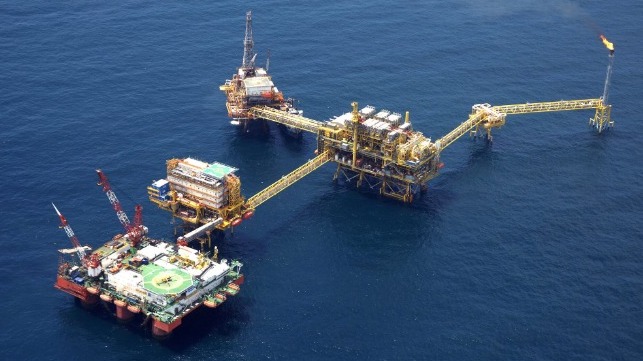Gigantic Offshore Methane Release Spotted by Satellite

A team led by researchers at the Universitat Politecnica de Valencia have used satellite surveillance methods to find and quantify an ultra-large release of methane from the Zaap-C offshore oil and gas platform in the Bay of Campeche. It is believed to be the first time that remote sensing has been used for detecting methane emissions from offshore operations, and it represents a significant contribution to the monitoring of this potent greenhouse gas.
Based on the researchers' analysis, the platform complex emitted about 40,000 tonnes of methane over the span of 17 days (the warming-potential equivalent of about 3.4 million tonnes of CO2). This cloud of natural gas would be invisible to the eye, but methane is readily detectable by infrared. The team used infrared imaging sensors aboard the WorldVision-3 satellite, which were precise enough to identify the source down to the specific platform (Zaap-C) and the specific location aboard the platform (the flare towers for the production and separation units).
By cross-checking with data from a NOAA/NASA satellite that can detect active fires, the team determined that the methane emissions from the platform lined up with the days when the facility was not flaring off gas.
Zaap-C has flared gas more or less continuously since it began production in the 1990s, and the shutdown of its flaring towers marked a unique one-time event. During a 17-day period in December, the team detected extremely large methane (natural gas) plumes emanating from the platform. This "ultra-emitting" event was nearly equal to the entire regional emissions of Mexico's offshore sector for a year. It may well be the first time that it has occurred aboard Zaap-C, but the massive size of the release makes just one instance significant.
"These [random] events are likely to be unaccounted for in current [emissions] inventories, and if they occur frequently enough, they represent a significant contribution to total emissions for the offshore sectors," the team wrote.
It is the first time that this method of methane-emission detection has been shown to be effective for spotting sources at sea. The methane detection technique relies on picking up reflected infrared radiation from the earth's surface, and since infrared is heavily absorbed by water, the signal level from targets at sea is relatively low. To boost the power, the researchers took images only when the sun was directly behind the target, effectively looking straight at the "sun-glint" off the water - the orientation with the maximum available amount of reflected light.
Top image: Zaap-C, 2009 (Carl Tanzler / CC BY NC SA 2.0)
